There are advantages and disadvantages to both techniques. There is also a special case where the right-hand circuit has a significant advantage.
Left-hand circuit: A logic HI at the input results in a logic LO at the collector, which turns the LED on. The transistor acts as an inverter, which may be useful if the collector is driving another portion of the circuit (in addition to the LED).
Advantages:
1) turns ON with low control voltage. Basically, any voltage greater than Vbe (with suitable current limit resistor).
2) Transistor is saturated. This results in minimum heat generated by the transistor - this can be important if load current is high.
3) Power supply voltage that operates the LED can be a a different value than the logic voltage. This is often useful when operating the LED from a higher, un-regulated supply.
Right-hand circuit: a logic HI turns the LED on. However, this circuit is functioning as an emitter-follower. This has some consequences.
So long as the voltage at the collector of the transistor is equal to or higher than the chip logic HI voltage, the current through the LED is approximately equal to (V logic HI) - Vled - transistor Vbe drop - (tiny voltage drop across base resistor) all divided by the LED current limit resistor. Note that the base resistor is not needed in this application so long as you ensure that the voltage on the transistor collector is always equal to or greater than V logic supply.
Note the reduced voltage across the LED current limit resistor has to taken into account when calculating the value of that resistor.
Disadvantage: Power supply voltage at the collector has to be significantly higher than the sum of Vled & V logic HI. That specifically disallows this circuit from being used with low voltage logic.
There is a specific application where I prefer to use the emitter-follower configuration for driving LEDs. If you look closely at the emitter-follower configuration, you can think of it as a constant-current sink. Assuming that the output voltage from the chip always goes to V logic HI (CMOS output stage), you can set the LED current to whatever value is desired using just the emitter resistor. Note that this current doesn't change appreciably even if the transistor collector voltage is significantly higher than V logic.
This is useful when driving LEDs from an unregulated power supply. For example, a DC power supply derived from a 12Vac transformer with bridge rectifier and filter cap will have an output voltage between 12Vdc through about 20Vdc, assuming input line voltage variation of plus minus 20%.
I run my PIC projects with 5Vdc rail with unregulated supply voltages ranging from 12V through about 40Vdc. The PIC power supply is tiny - only capable of a few mA. I power all the LEDs and relays in the circuit from the unregulated supply. Using the emitter-follower LED driver keeps the PIC supply current to the minimum required and keeps the LED brightness constant even as the supply voltage varies.


